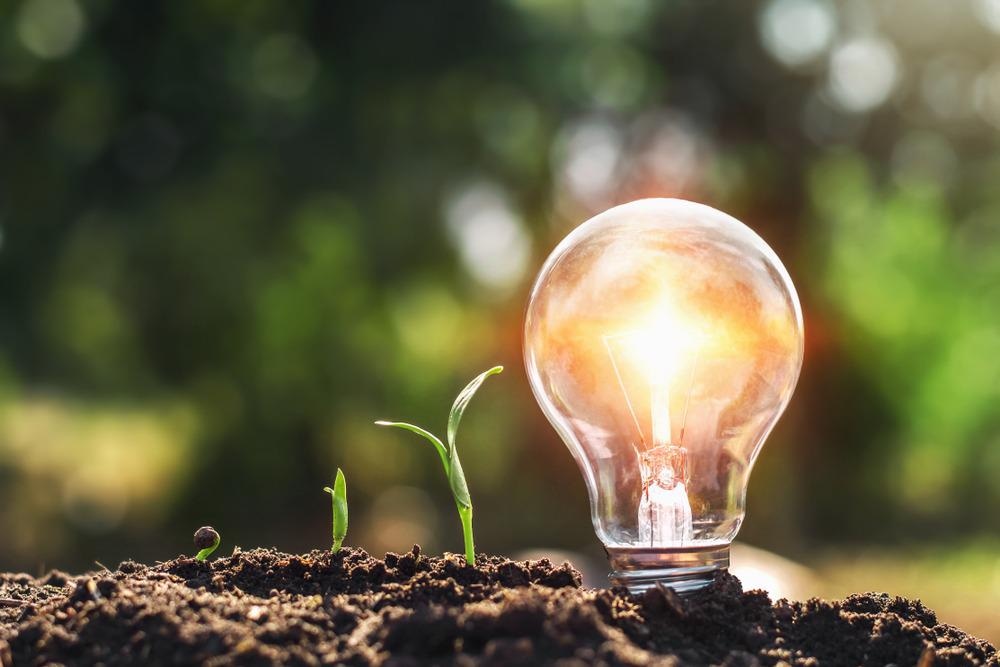In the past couple of decades, nanotechnology has helped to fulfill the continually growing demand for food, water, medicine, energy, and other essential commodities. This has been made possible because of the application of nanoparticles that possess many unique characteristics features such as morphology (shapes and sizes) and physical, chemical, magnetic, thermal, and optical properties. Recently, scientists have used nanoparticles to develop the next generation of glowing plants.

Image Credit: lovelyday12/Shutterstock.com
Insertion of nanomaterials into plant leaves confers several advantages such as enhancement of light emission and monitoring analytes taken up by roots. Scientists have also used nanoparticles to convert living watercress plants into chemiluminescent lamps, which can produce light at an average intensity of 1010 photons/s. Some genetically modified plants can emit light by insertion of bioluminescence genes, six genes of the lux operon, or the firefly enzyme luciferase.
Conversion of Living Plants into Functional Devices
Scientists have often used living plants to create functional devices to replace or reduce the use of plastics in circuit boards which would be ultimately disposed of as waste. Plant leaves possess optical properties used for their physiological function, including photosynthesis.
Some examples where plants act as devices involve using plant leaves as sensors for the detection of plants’ mechanical wounds, plant adenosine triphosphate (ATP)–powered genetically encoded autoluminescent light sources, and the creation of biocompatible plant-based electronic semiconductors and electrochromic pixels. In the past, scientists have used plant cells and carbon nanotube composites to develop electronic temperature sensors. Additionally, a DNA-wrapped carbon nanotube has been used to convert spinach plants into ground-water monitoring sensors.
Nanobionic Light-Emitting Plant that an LED can Charge
A group of engineers at MIT have created a light-emitting plant that can be charged by a light-emitting diode (LED). Interestingly, just after charging for ten seconds, plants glow brightly for several minutes and can be recharged repeatedly. These nanobionic plants are referred to as the next generation of glowing plants due to being ten times brighter than the first generation reported in 2017.
Michael Strano, the Carbon P. Dubbs Professor of Chemical Engineering at MIT and part of the research team that developed the next generation of glowing plants, stated that this creation is a big leap towards light-based lighting. Researchers involved in this study stated that the creation of ambient light with renewable chemical energy is a bold step towards sustainable lighting.
Their research was published in Science Advances.
Development of Nanobionic Plants as a Sustainable Light Source
Strano’s lab has been involved with plant nanobionics for several years. The team developed the first generation of glowing plants using nanoparticles carrying luciferase and luciferin. These nanoparticles enabled watercress plants to emit dim light, i.e., around one-thousandth the amount of light needed to read, for a few hours.
The main focus in developing the next generation glowing plant has been the emission of brighter light for a more extended period. Subsequently, the team envisioned using a capacitor that can store electricity and release it when needed. Plants can store light in the form of photons, which can be released over time.
To develop a light capacitor, researchers have used phosphor that can absorb visible or ultraviolet light, and then slowly release it as a phosphorescent glow. In this study, researchers used strontium aluminate (SA) nanoparticles as a light capacitor whose function is similar to the phosphor. The nanoparticles were coated with silica to protect the plant from damage.
Glowing plants
Video Credit: Massachusetts Institute of Technology (MIT)/YouTube.com
In the search for the alternative light source, scientists envisioned using plant’s spongy mesophyll cells as a photonic substrate to enhance plant-based photonics and light emission specifically.
The spongy mesophyll cells are a type of parenchyma cell associated with gas and liquid exchange through stomata pores within the surface of most leaves. Researchers used nanoparticles introduced inside the mesophyll cells to modify their natural ability to absorb, store, and re-emit incident light, enabling the introduction of functional optics into the living plants (mesophyll cells).
Scientists reported that plants like tobacco (Nicotiana tabacum), daisy (Bellis perennis), basil (Ocimum basilicum), elephant ear (Colocasia), and watercress (Nasturtium officinale) can be converted into a plant-based photonic device by stomatal infusion of SA. The nanoparticles that are several hundred nanometers in diameter are infused into the plants through the stomata.
The infusion of silica-coated SA nanoparticles into the plant’s mesophyll cells results in the formation of a thin-film that can absorb photons from both sunlight as well as LED. Researchers have reported that ten seconds of blue LED exposure enabled the plant to emit light for about an hour, and the photoemission was up to 4.8 × 1013 photons/second. It was also observed that the light was brightest for the first five minutes, following which it gradually became dim.
Conclusion
These newly developed glowing plants offer phosphorescent capacitance, optical reflectance, signaling, and light emission. Researchers expect that advancements in plant nanobionic technology could replace the current unsustainable urban electrical lighting grid and help illuminate rural areas cost-effectively.
Continue reading: Synthesizing ZnO Nanocomposites Using Pomegranates.
References and Further Reading
Gordiichurk, P. et al. (2021) Augmenting the living plant mesophyll into a photonic capacitor. Science Advances. 7(37). Available at: https://doi.org/10.1126/sciadv.abe9733
Trafton, A. (2021) The next generation of glowing plants. [Online] Available at: https://news.mit.edu/2021/glowing-plants-nanoparticles-0917
Kwak, Y.S. et al. (2017) A Nanobionic Light-Emitting Plant. Nano Letters. 17(12). pp. 7951–7961. Available at: https://doi.org/10.1021/acs.nanolett.7b04369
Disclaimer: The views expressed here are those of the author expressed in their private capacity and do not necessarily represent the views of AZoM.com Limited T/A AZoNetwork the owner and operator of this website. This disclaimer forms part of the Terms and conditions of use of this website.